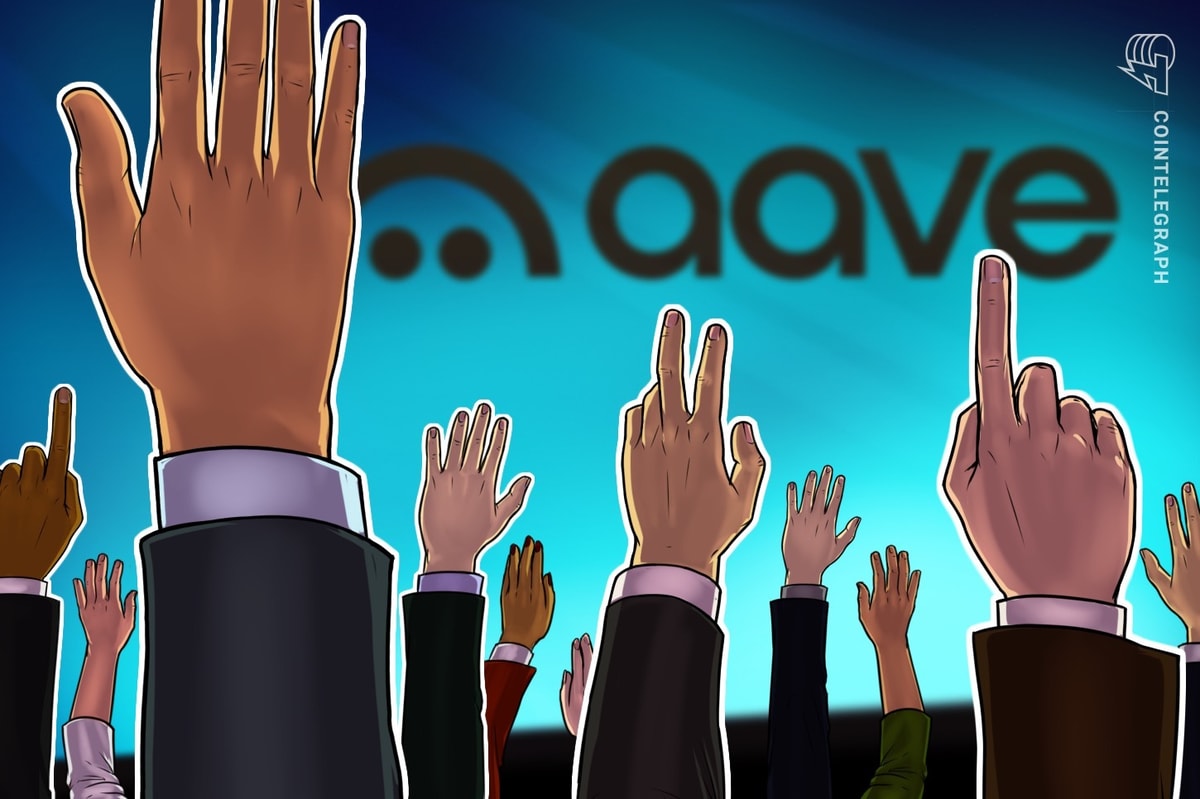Aave’s Governance Token Buyback Plan Approved by Tokenholders
Aave’s tokenholders have approved a governance proposal to start buying back the decentralized finance (DeFi) protocol’s governance token, AAVE, as part of a broader tokenomics overhaul. The proposal was approved by more than 99% of AAVE tokenholders, permitting the protocol to purchase $4 million in AAVE tokens, enough for one month of buybacks.
Buyback Mechanism Details
The proposal permits the protocol to repurchase $4 million in AAVE tokens, which will be used to sustainably increase AAVE acquisition from the open market and distribute it to the Ecosystem Reserve. The goal is to achieve this by repurchasing $1 million AAVE tokens weekly for six months.
Context: DeFi Protocols Implementing Buyback Mechanisms
The buyback proposal is part of a broader trend in the DeFi space, where protocols are implementing buyback mechanisms in response to tokenholder demands. DeFi protocols are under increasing pressure to provide tokenholders with a share of protocol revenues, partly due to the friendlier regulatory environment fostered by US President Donald Trump.
Recent Examples of Buyback Mechanisms
Other DeFi protocols have implemented similar buyback mechanisms. For instance, Ethena, a yield-bearing stablecoin issuer, agreed to share some of its approximately $200 million in protocol revenues with tokenholders in November. Ether.fi, a liquid restaking token issuer, has also tipped plans to direct 5% of protocol revenues toward buying back native ETHFI tokens.
Aave’s Tokenomics Revamp
The Aave Chan Initiative (ACI), a governance advisory group, proposed a tokenomics revamp that would include new revenue allocations for AAVE tokenholders, enhanced safety features for users, and the creation of an “Aave Finance Committee.” The revamp aims to provide a more sustainable and equitable tokenomics model for the AAVE token.
Aave’s Market Performance
Aave is Web3’s most popular DeFi protocol, with total value locked surpassing $17.5 billion as of April 9, according to DefiLlama. The protocol is also among DeFi’s biggest fee generators, with an estimated annualized fee income of $350 million.
Conclusion
The approval of Aave’s governance proposal marks a significant step toward a broader tokenomics overhaul for the protocol. The buyback mechanism aims to provide a more sustainable and equitable model for AAVE tokenholders, while also increasing token acquisition from the open market. As DeFi protocols continue to evolve and adapt to changing market conditions, it will be interesting to see how other protocols implement their own buyback mechanisms.
FAQs
- What is the purpose of Aave’s buyback mechanism? The purpose is to sustainably increase AAVE acquisition from the open market and distribute it to the Ecosystem Reserve.
- How much will Aave spend on buying back AAVE tokens? Aave will spend $4 million in AAVE tokens, enough for one month of buybacks.
- What is the goal of Aave’s tokenomics revamp? The goal is to provide a more sustainable and equitable tokenomics model for the AAVE token, including new revenue allocations for tokenholders and enhanced safety features for users.
- Which other DeFi protocols have implemented buyback mechanisms? Ethena, Ether.fi, and Maple have piloted similar buyback mechanisms for their native tokens.
- What is the current market performance of Aave? Aave is Web3’s most popular DeFi protocol, with total value locked surpassing $17.5 billion and estimated annualized fee income of $350 million.





![Crypto Recovery Pump Incoming!! [DUMP NEARLY OVER – ACT NOW] Crypto Recovery Pump Incoming!! [DUMP NEARLY OVER – ACT NOW]](https://i.ytimg.com/vi/MrMeVsgZJPU/maxresdefault.jpg)


